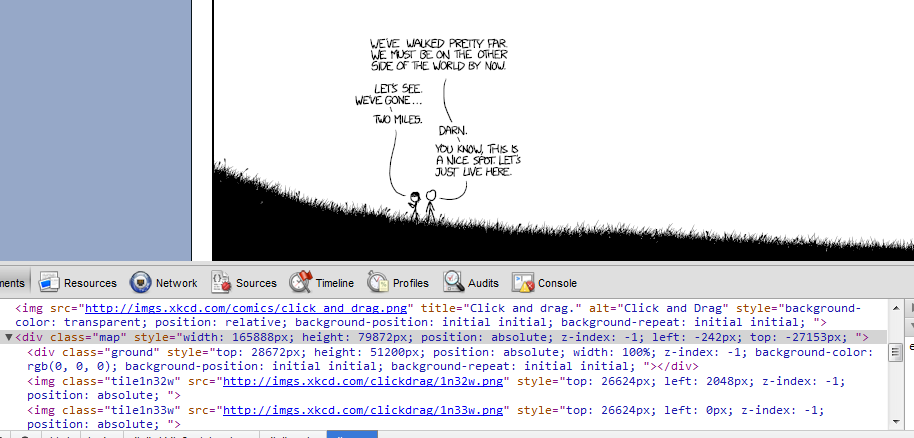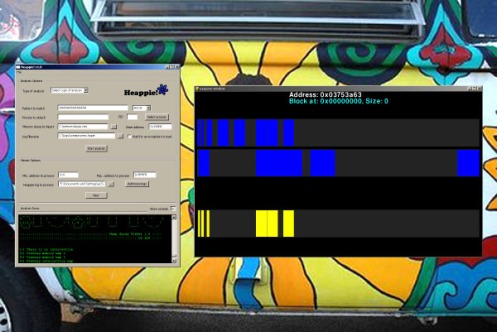In case you missed it, today’s XKCD comic titled Click and Drag is simply amazing! Go check it out first, spend a few hours lost in it, and come back only when you’re done having fun. I’ll wait here. 🙂
…
Ok, you’re back. Naturally you’ll want to cheat on it at some point, to make sure you didn’t miss out on any hidden easter eggs! So let’s take a look at the web page.
The easiest route is loading the comic on Google Chrome, or Chromium. Just right click on the image and select “inspect element”. This quickly reveals how the neat trick works.

Taking a peek under the hood…
The “world” is divided into tiles of fixed size, and at all times the page loads the tile you’re currently viewing and the surrounding ones, in order to seamlessly stitch them together when scrolling. The clickable area is a map and the coordinates are used to build the URL to the images, which always follows the same pattern (north, south, and east and west coordinates). Trying out a few numbers reveals the “north” coordinate goes from 1 to 5, the “east” coordinate goes from 1 to 48 and the “west” coordinate goes from 1 to 33. Not all coordinates seem to work around the edges of the world (north 2 west 5 doesn’t work for example) and I couldn’t get south to work with manual tries. I suppose a couple empty images are used for those (one for black and one for white) but I didn’t confirm it.
The first thing I tried was just accesing the parent directory to see if directory indexing was enabled, but no such luck. Instead, I wrote this quick and dirty script in Python to download all images, using urllib to download them and shutil to write them to disk. Missing tiles are simply skipped.
This should be enough to check for easter eggs, but it’d be interesting of someone assembles a big image containing all the tiles. Let me know if you do! 🙂
Update 1: I originally missed the east coordinate, so the script was updated to try and bruteforce in all directions 1 to 10 north and south, and 1 to 50 east and west. This means a lot more HTTP requests, so I also added a pause between them as good netizens should.
Update 2: This seems to be the complete list of valid image URLs.
Update 3: A commenter pointed out somebody did assemble the entire world image! Check it out here.
Update 4: @prigazzi on Twitter pointed out this fully navegable map as well, based on Google Maps. Check it out! It’s IMHO the best one yet. 🙂
Update 5: The previous link no longer works, but this works pretty much the same way: xkcd-map.rent-a-geek.de
(more…)

















